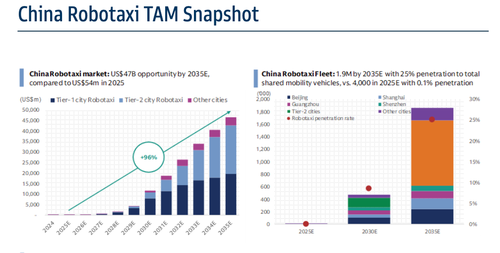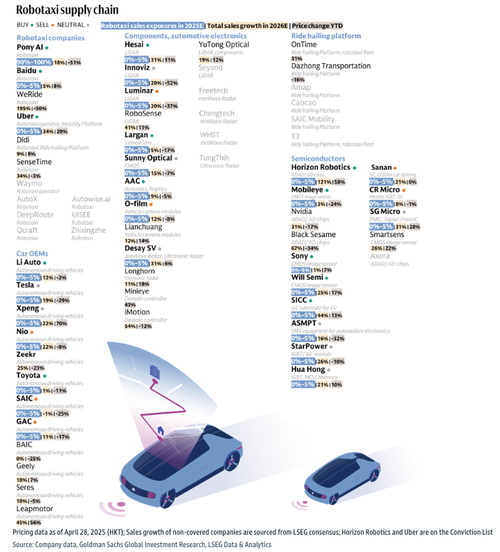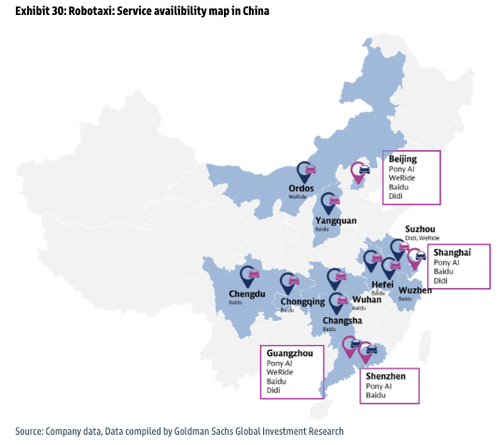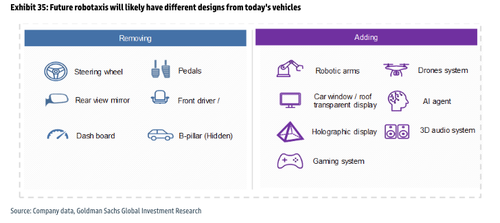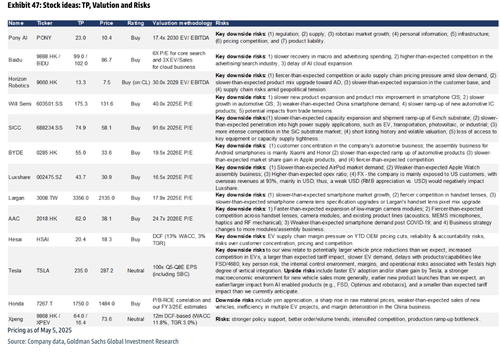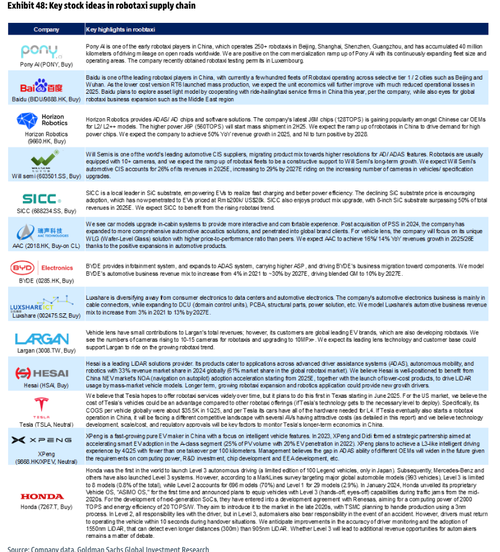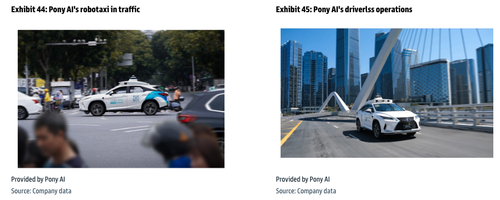China's robotaxi revolution is moving along at an accelerated rate when compared to any other country. By the decade's end, Goldman analysts forecast that half a million autonomous robotaxis will be operating across ten major cities.
"We see Robotaxis as one of the earliest and most visible avenues to commercialization of the autonomous technology, with growing consumer acceptance across large Tier 1 cities, a tightening supply of human drivers as the fleets mature and drivers retire, and with Government and insurance industry as enablers to support growth," Goldman analysts Allen Chang, Verena Jeng, and others wrote in a note on Tuesday.
Chang said the total addressable market opportunity could be as much as $47 billion by 2035.
Early movers like Pony.ai, WeRide, and Baidu Apollo are well-positioned to benefit from China's accelerating shift toward autonomous mobility.
Goldman analysts broke down the underlying supply chains for clients, emphasizing that China's robotaxi sector offers many compelling investment opportunities.
The analysts forecast that China's robotaxi industry will increase 700x over the next ten years:
We expect China's Robotaxi market to grow from US$54 million in 2025 to US$12 billion in 2030 and US$47 billion in 2035 (Exhibit 4). The TAM will grow 757x in the 10 years of 2025-35, indicating a strong market opportunity. Revenue generation is mainly from riding fare charges, which we will discuss further in the revenue generation session of the report. Overall, we expect each Robotaxi can generate US$69 per day by 2035 (vs. US$36 in 2025), which will be higher than traditional ride-hailing vehicles which on average generate US$28-56 (Rmb200-450) per day, due to longer operating times.
Robotaxi operations are already available in more than ten cities, including Beijing, Shanghai, Guangzhou, Shenzhen, Wuhan and Chongqing etc.
This is wild. So what about a humanoid robot to load luggage?
Analysts provided clients with a list of robotaxi operators, automotive semis, and automotive components companies that will benefit from the rise of robotaxis in the world's second-largest economy.
As well as additional stock ideas in the robotaxi supply chains.
Meanwhile, in the U.S., robotaxi operations have been lagging behind China, primarily due to regulatory fragmentation, a slower pace of infrastructure adaptation, and cautious public sentiment.
Waymo (previously Google's self-driving car division), Zoox, Cruise, and Tesla are all either in the testing phase or have launched small-scale commercialization. The next robotaxi launch in the U.S. will be in June with Tesla.
What's becoming very clear is that automation is set to displace hundreds—if not millions— of transport jobs globally by 2035, as robotaxis, autonomous trucks, and drones become cheap enough to be deployable for the mass market.
The age of transportation automation is beginning to rev up and could go full throttle by the end of the decade. For the U.S., it's crucial to re-shore and friend-shore the critical supply chains—especially in semiconductors and rare earths—needed to power this automation wave or risk another decade of Beijing holding America's critical supply chains hostage.
Also, what happens to transportation drivers displaced by automation?
Well Goldman in 2023 covered that in the note titled "AI Will Lead To 300 Million Layoffs In The US And Europe."
Loading...
